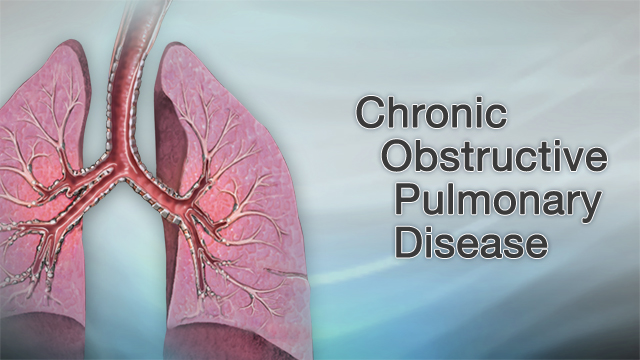Chronic Obstructive Pulmonary Disease (COPD) is a progressive lung disease characterize by airflow limitation and respiratory symptoms. Managing COPD involves a multifacted approach that includes lifestyle changes, medications, and sometimes supplemental oxygen therapy or surgical interventions. Among the medications use in COPD management, the Asthalin Inhaler, also known as Salbutamol Inhaler, plays a crucial role in relieving symptoms and improving patients’ quality of life.
Understanding COPD
Before delving into treatment options, it’s essential to grasp the nature of COPD. The disease primarily manifests as two conditions: chronic bronchitis and emphysema.
Chronic bronchitis involves long-term inflammation of the bronchial tubes, leading to excessive mucus production and coughing.
Emphysema, on the other hand, damages the air sacs in the lungs, impairing their ability to expand and contract efficiently.
Lifestyle Modifications
Managing COPD often starts with lifestyle modifications to reduce symptoms and slow down disease progression. These may include:
Smoking Cessation
Smoking cessation is paramount in COPD management as continue smoking exacerbates symptoms and accelerates lung function decline.
Exercise
Regular physical activity can improve lung function, stamina, and overall well-being in COPD patients. It helps strengthen respiratory muscles and enhances cardiovascular health.
Healthy Diet
A balance diet rich in fruits, vegetables, lean proteins, and whole grains can support overall health and provide essential nutrients for COPD patients.
Pulmonary Rehabilitation
This structure program combines exercise, education, and support to help COPD patients better manage their symptoms and improve their quality of life.
Medications for COPD
Medications are a cornerstone of COPD management, aiming to alleviate symptoms, reduce exacerbations, and improve lung function. Commonly prescribe medications include:
Bronchodilators
These drugs relax the muscles around the airways, making it easier to breathe. Bronchodilators are typically classify into two types: beta-agonists and anticholinergics. The Asthalin Inhaler belongs to the beta-agonist category and contains Salbutamol, a fast-acting bronchodilator. It provides quick relief from acute bronchospasm and symptoms like shortness of breath and wheezing.
Inhaled Corticosteroids (ICS)
ICS help reduce airway inflammation and may be prescribe in combination with long-acting bronchodilators for moderate to severe Chronic Obstructive Pulmonary Disease (COPD) cases.
Combination Inhalers
Combination inhalers containing both a long-acting beta-agonist (LABA) and an inhaled corticosteroid (ICS) are often prescribe to provide both symptom relief and long-term control.
Phosphodiesterase-4 Inhibitors (PDE-4 Inhibitors)
These medications help reduce inflammation and relax the airways, although they are typically reserve for severe COPD cases.
Antibiotics and Antivirals
In cases of acute exacerbations associate with bacterial or viral infections, antibiotics or antivirals may be prescribe.
Oxygen Therapy
Supplemental oxygen therapy may be necessary for COPD patients with severe hypoxemia to improve oxygenation and alleviate symptoms.
Asthalin Inhaler in COPD Management
The Asthalin Inhaler contains Salbutamol, a short-acting beta-agonist bronchodilator that provides rapid relief from bronchospasm and relate symptoms. Here’s how it works and when it’s typically use:
Mechanism of Action
Salbutamol binds to beta-2 adrenergic receptors in the lungs, leading to smooth muscle relaxation and bronchodilation. This results in widen airways, making it easier to breathe.
Indications
The Asthalin Inhaler is primarily indicate for the relief of acute bronchospasm in COPD and asthma patients. It is commonly use as a rescue inhaler to alleviate symptoms such as shortness of breath, wheezing, and chest tightness.
Dosage and Administration
The recommend dose of Asthalin Inhaler for COPD patients is typically 2 puffs every 4 to 6 hours as need. However, individual dosing may vary base on the severity of symptoms and the patient’s response to treatment.
Precautions and Side Effects
While Asthalin Inhaler is generally well-tolerate, common side effects may include tremors, palpitations, headache, and nervousness. It’s important for patients to use the inhaler as direct and seek medical attention if they experience severe or persistent side effects.
Conclusion
COPD is a chronic and progressive lung disease that requires comprehensive management to alleviate symptoms, slow down disease progression, and improve patients’ quality of life. Medications, including bronchodilators like the Asthalin Inhaler, play a crucial role in providing symptomatic relief and improving lung function in COPD patients.
However, treatment should be individualize base on the severity of the disease, the presence of comorbidities, and the patient’s response to therapy.
Alongside medications, lifestyle modifications can further enhance COPD management outcomes, empowering patients to lead fulfilling lives despite their condition.

